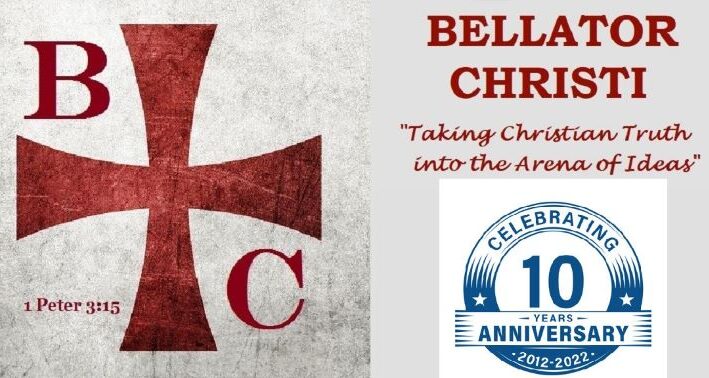By: Curtis Evelo (with a section from Brian Chilton) | February 13, 2022
I want to take a bit of time to discuss the topic of the Bible. In this article and what I’ve laid out in my notes, this looks to be a series of articles that will open a layer of thought that the reader of God’s Word may not necessarily be aware.
So in this article, I want to lay a foundation for the next series of articles that I will come out with. My goal in this is to reveal the Divine nature of the scriptures and how these layers can show us attributes of God we may sometimes miss. Along with this, I want to help deepen our faith in a God that is intentional with the redemption of us.
1)what do we mean when we say biblical layers
2)the historic evidence that others have noticed and picked up on these layers?
3)what are the types of layers that we can see evidence for?
Before we begin, I have asked our own Brian Chilton to provide some background to the understanding of biblical layers. Did any of the early Christians hold to biblical layers?
Augustine’s Understanding of Biblical Layers (Brian Chilton)
Augustine of Hippo (November 13, 354–August 28, 430) posited that Scripture held four layers. In the age of Augustine, biblical interpretation had become a controversial affair. On the one hand, the Alexandrian school argued for a more allegorical interpretation of Scripture while still being anchored in a literal understanding. Of the Alexandrian school, Origen of Alexandria (184–253) was the most prominent theologian and biblical interpreter. On the other hand, many theologians struck against a typological and/or allegorical understanding. This school grew out of Antioch, Syria, thus aptly named the Antiochene school. The Antiochenes held to a far more literal interpretation of Scripture and avoided much in the way of allegory. Theophilus of Antioch (c. 169), Diodorus of Tarsus (d. 390), and John Chrysostom (c. 347–407) were among the most prominent members of the Antiochene school.
Augustine of Hippo afforded a form of biblical interpretation that was nestled between the two extremes of the Alexandrian and Antiochene schools. Augustine averred that Scripture contained four layers of interpretation. The first layer was the literal understanding—that is, the historical understanding. The allegorical level is the second level. This contains figurative understandings of Scripture. The typological level is the third level, which harmonizes themes from the two testaments of Scripture. The aetiological layer is the fourth and final layer, which shows causal effects of things that have been done and are presented.[1]
Concerning the relationship between history and allegory, Augustine wrote,
“Now in my opinion it is certainly a complete mistake to suppose that no narrative of events in this type of literature has any significance beyond the purely historical record; but it is equally rash to maintain that every single statement in those books is a complex of allegorical meanings….In spite of that, I do not censure those who have succeeded in carving out a spiritual meaning from each and every event in the narrative, always provided that they have maintained its original basis of historical truth.”[2]
He also notes, “For such is the depth of the Christian Scriptures that, even if I were attempting to study them and nothing else, from boyhood to decrepit old age, with the utmost leisure, the most unwearied zeal, and with talents greater than I possess, I would still be making daily progress in discovering their treasures.”[3]
Thus, Augustine believed that it was of the utmost importance to understand the historical and literal meaning of Scripture. Good biblical interpretations must be centered and anchored in the primary meaning of Scripture. To deny this aspect of interpretation would lead one into the extremes of the Alexandrian school, leaving ultimate meaning to the whimsical notions of each reader. However, since Scripture is God’s revelation, then one can anticipate deeper spiritual meanings in the literal, historical content of Scripture. Denying this aspect of interpretation would lead one to the extremes of the Antiochene school. Therefore, the argument that Curtis provides—anchoring Scripture in its historical meaning while remaining open to typologies and deeper spiritual interpretations—is a practice found in the early church.
Biblical Layers in Genesis 22 (Curtis Evelo)
In this article, I am also going to “prime the pump,” so to speak, by demonstrating a layer that will be from a familiar storyline. Now for the purposes of this article, I will not touch on all “typologies/shadows.”[4] But I will point out one power typology we see it. Let’s go on this journey together and read the story of Abraham and Isaac in Genesis 22. So go ahead and take a minute and read the full chapter to acquaint yourself with the characters and actions.
In this account Isaac asked, “father, where’s the sacrifice?” Abraham responds with a profound statement, if we catch it, “God will provide for himself the lamb ……” and as Abraham was about to sacrifice Isaac the angel of the Lord stops him and complimented Abraham’s faithfulness and then Abraham “noticed a ram.”
The initial surface layer is the profound faith that Abraham had lived through many situations where God had either given favor and victory against impossible odds in battle or provided salvation for family members. He has seen this provision before therefore he has the faith that God would provide again. The key I want to look at is you should notice that Isaac asked where the “lamb” was and then after the angel stopped Abraham there was a “ram” caught in the thicket. I believe that this is a point where God provided the sacrifice with a ram, not a lamb because he’s essentially saying the sacrifice that I’m sending now is still insufficient but soon on this very place, I will bring My flawless Lamb that will cover sin once and for all!!! Jesus, God incarnate came to redeem us, and that redemption was completed on the cross.
About the Author

Curtis Evelo is a cattle rancher at the E6 Hereford Ranch in St. Ignatius, Montana. Curtis is the Co-Host and Producer of the Bellator Christi Podcast. He often teaches and speaks at his church Cornerstone Faith Center in St. Ignatius. Curtis provides a common-sense approach to Christianity as he contemplates the wonders of God’s creation in Big Sky Country.
More from the Author
Curtis Evelo, “The Danger of Being a Consumer-Driven Christian,” BellatorChristi.com (November 11, 2021), https://bellatorchristi.com/2021/11/15/the-danger-of-being-a-consumer-driven-christian/
Notes
[1] “Four ways of expounding the law have been laid down by some scripture commentators, which can be named in words derived from the Greek, while they need further definition and explanation in plain Latin; they are the way of history, the way of allegory, the way of analogy, the way of aetiology. History is when things done by God or man are recounted; allegory when they are understood as being said figuratively; analogy, when the harmony of the old and new covenants is being demonstrated; aetiology, when the causes of the things that have been said and done are presented.” Augustine, Unfinished Literal Commentary on Genesis 2.5.
[2] Augustine, City of God 17.4.
[3] Augustine, Confessions 12.14.17.
[4] Shadows are best understood as patterns, whether implied or explicit.
© 2022. BellatorChristi.com.






[…] Source: Interpreting with Biblical Layers […]